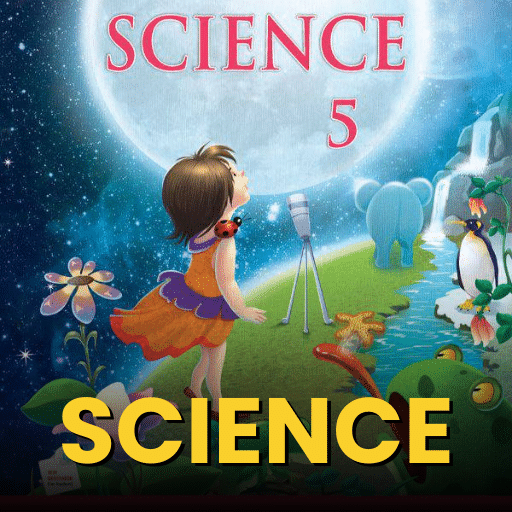Article Writing - Research Aptitude Notes
| Table of contents |

|
| Definition and Purpose |

|
| Structure of a Research Article |

|
| Format and Styles of Article Writing |

|
| Styles of Referencing |

|
| Steps to research article writing |

|
Definition and Purpose
Article writing is a crucial component of the Research Aptitude section in UGC NET Paper 1. It assesses a candidate's ability to effectively communicate research findings and ideas. This guide provides an overview of article writing, its structure, and essential elements to help you prepare for the exam.

Understanding Article Writing
An article is a written composition on a specific topic, intended for publication in journals, magazines, or online platforms. In the context of research, article writing involves presenting original findings, reviews, or theoretical discussions in a structured and coherent manner.
Structure of a Research Article
A well-structured research article typically includes the following sections:
Title: A concise and informative statement reflecting the main topic or findings of the research.
Abstract: A brief summary (usually 150-250 words) outlining the purpose, methodology, key findings, and conclusions of the study.
Keywords: Specific terms that encapsulate the main topics of the research, aiding in indexing and searchability.
Introduction: Introduces the research problem, provides background information, and states the objectives and significance of the study.
Literature Review: A critical analysis of existing research related to the topic, identifying gaps the current study aims to address.
Methodology: Details the research design, methods, procedures, and tools used for data collection and analysis, ensuring reproducibility.
Results: Presents the findings of the study, often using tables, graphs, and charts for clarity.
Discussion: Interprets the results, explains their implications, compares them with previous studies, and acknowledges limitations.
Conclusion: Summarizes the main findings, their significance and suggests directions for future research.
References: Lists all sources cited in the article, following a specific citation style (e.g., APA, MLA, Chicago).

Unlike a research paper, an article is not strictly bound by the methodology used in the research. While a research paper covers the entire outcome of a research project, an article is more focused on a specific topic. The primary aim of an article is to provide detailed information on a particular subject. Let's understand this in detail.
Format and Styles of Article Writing
When writing an article, the following format and styles should be adhered to:
Front Matter
1. Title Page: The title page should be informative and include relevant keywords that clearly reveal the topic of the article. It should also include the title of the article and the author's name.
Purpose: Captures the essence of the research in a concise way.
Tips: Should be brief, specific, and informative.
Example: “Impact of Online Learning on Student Performance During COVID-19”

2. Abstract: The abstract should be a concise summary of about 100 to 150 words, roughly 5-10 sentences. It should briefly state the research problem, methodology, key results, and conclusions.
Purpose: Gives a quick summary of the entire research article.
Length: Typically 150–250 words.
Includes:
- The research problem
- The methodology
- Key findings
- Conclusion or ImplicationsTip: Write this section last, even though it appears first.
3. Keywords
Purpose: Help readers and databases find the article.
Usually: 4–6 words or phrases relevant to the article.
Example: Online learning, academic performance, virtual classrooms
Body
1. Introduction: This section should explain the reasons for conducting the study, its theoretical framework, the goals of the research, the problem statement, and any hypotheses that were created.
Purpose: Sets the stage for the reader.
Includes:
Background of the study
Research problem
Objectives of the study
Importance of the topic
Tip: Make it engaging and relevant to real-world issues.
2. Literature Review
Purpose: Shows what others have already said about the topic.
Includes:
Summary and critical evaluation of previous studies
Gaps in existing research
Tip: Avoid just listing studies—show how they relate to your own.
3. Methodology: In this section, the researcher should describe the samples used in the study, how they were obtained or selected, and the materials (equipment, apparatus, and measuring instruments) used. The researcher should also detail the procedures followed during the study.
Purpose: Describes how the research was conducted.
Includes:
Research design (qualitative, quantitative, or mixed)
Data collection methods (e.g., survey, experiment, observation)
Tools used (e.g., questionnaire, software)
Sampling techniques
Tip: Ensure clarity so the study can be repeated by others.
4. Research Sources: The researcher should list the different types of reading materials and sources used in the study, such as banks, magazines, internet sites, and other related materials.
5. Results: This section should present the results of the study, usually accompanied by text, tables, and graphs. The author should describe the patterns and quality of the results and estimate their accuracy and precision.
Purpose: Presents the findings without interpretation.
Includes:
Tables, charts, or graphs
Data analysis (statistical or thematic)
Tip: Keep this factual and objective.
6. Discussion: This section should include several key points:
- Non-technical Interpretation of Results: Explain the results in a way that is understandable to non-experts.
- Linking Results to Original Purposes and Hypotheses: Discuss how the results relate to the original research goals and hypotheses.
- Explanation of Results: Provide insights into why the results turned out the way they did.
- Study’s Limitations: Identify any limitations of the study.
- Suggestions for Further Research: Offer suggestions for future research based on the findings.
 |
Download the notes
Notes: Article Writing
|
Download as PDF |
End Matter
1. Conclusion
Purpose: Summarizes the research and its contributions.
Includes:
Recap of key findings
Importance of the research
Suggestions for future studies
Tip: Keep it brief and focused on takeaways.
2. References: The article should include a list of all the references used during the writing process. This can include internet sites, journals, magazines, books, theses, and other sources.
Purpose: Lists all the sources cited in the article.
Tip: Use the required citation style (e.g., APA, MLA, Chicago).
Note: Accuracy in referencing is crucial to avoid plagiarism.
Styles of Referencing
Proper referencing is vital to acknowledge sources and avoid plagiarism. Common referencing styles include:
APA (American Psychological Association): Used primarily in social sciences.
MLA (Modern Language Association): Common in humanities.
Chicago: Offers two systems: notes and bibliography (humanities) and author-date (sciences).
Each style has specific guidelines for formatting citations and references. Familiarity with the required style is essential for academic writing.
Steps to research article writing
- Start writing beforehand: A research article can be written before the experiments are completed or the actual thesis has been written. Writing daily or weekly helps in generating new ideas around the research problem. It also makes it easier to consolidate data in the form of an article whenever the need arises.
- Deciding time to publish: Having a timeline in mind ensures that one is writing with a definite deadline. Some journals accept manuscripts all around the year, and some only do special features. Keeping this in mind, one should keep the content ready. Whenever the data you have collected represents a complete story (or a significant part of it), getting it published is the next step.
- Title and abstract: Deciding on a title and preparing an abstract is the next step. The title should be short, informative and unique. An abstract should be able to give a brief overview of your research article. The title and abstract are, in fact, important components of a research article.

- Deciding the format: Peer-reviewed journals usually follow the IMRAD format – Introduction, Methods, Results and Discussion. Each section also follows a word limit feature which may vary from one journal to another.
- Outline of the Paper: An outline acts as a road map to one own research. A research article should follow an outline based on some themes and sub-themes clubbed together. A proper outline gives coherence and consistency to the ideas put together.
- First draft: Finalising the first draft is the next step. One should not write and edit at the same time. Prepare the first draft and edit as and when new revisions are to be made. Make sure that the first draft is the blueprint of the outline made, abstract and title.
- References: This is another important component as well as a step of article writing. After the revised draft, one should make sure that citations have been done correctly and follow a proper format.
- Revise as per the Journal’s instructions: Meet all the criteria the journal expects and, based on that make necessary changes. That will make the final draft ready to be submitted to the editor.
- Feedback: After submission, one receives comments from the editors and reviewers. They will ask for changes in terms of the word limit, grammar and punctuation, flow of the paper, etc.
Indeed, research writing doesn’t come naturally to most of us and is highly formalised and rhetorical. Normally, it takes months to a year or two for a good research paper to be written and get published in a reputed research journal.
|
17 videos|30 docs|9 tests
|
FAQs on Article Writing - Research Aptitude Notes
| 1. What are the different formats of article writing? |  |
| 2. What is the purpose of article writing? |  |
| 3. What are the steps involved in researching article writing? |  |
| 4. How can the style of article writing vary? |  |
| 5. Why is it important to edit and proofread an article before publishing? |  |


























